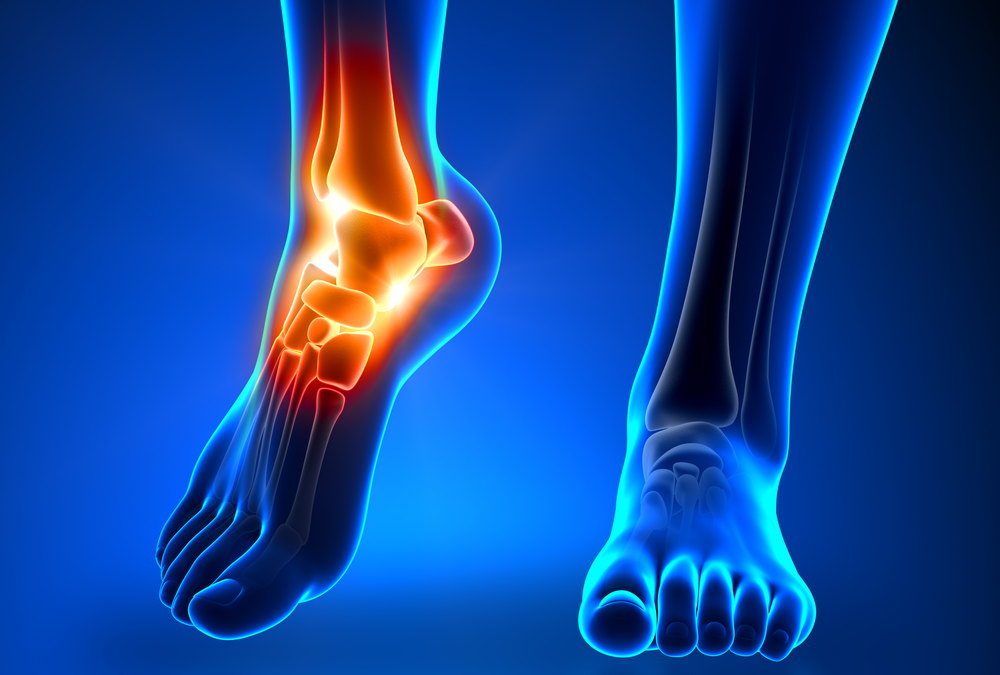Ankle pain is a big concern because it prevents patients from moving around freely. It’s often hard to tell whether the issue will resolve itself because there are so many potential causes. When in doubt, speak to a foot doctor in Kelowna, BC or Victoria, BC. They can diagnose the condition and suggest appropriate remedies.
Will Ankle Pain Go Away on Its Own?
Sometimes, ankle issues can be treated with home remedies like rest, ice, and elevation. However, it all depends on the type and severity of the injury. People suffering from tendinitis, bursitis, and a sprained ankle often benefit from physical therapy or orthotics, but their pain might disappear after several months of diligent stretching and self-care.
Those who have a broken bone need to see a specialist. They might require crutches, a cast, or even surgery. Patients with osteoarthritis and gout can sometimes manage their pain at home, but they won’t get better because these conditions are chronic. An experienced foot specialist can help them keep their symptoms under control.
Tendinitis
There are several tendons in and around the ankle joint. They connect bones to muscles, but if they get overused or irritated, they can get inflamed. This condition is called tendinitis, and the main symptoms are a persistent ache that gets worse after exercise, stiffness in the morning, and trouble climbing stairs or running. Typically, the pain is mild at first, but it intensifies if the patient continues to participate in sports.
Tendinitis isn’t a permanent condition, and it almost always goes away on its own as long as the ankle gets enough rest. Patients have to stop practising their sport for several weeks, ice and elevate the affected area, and take over-the-counter painkillers whenever necessary. Physical therapy and orthotic devices might be needed if the condition is caused by a postural imbalance.
Bursitis
Bursae are small, fluid-filled sacs that lubricate your joints and make movement easier. Sometimes, they can get inflamed due to an injury or overuse. Heel bursitis is a painful condition, but it usually goes away on its own. The symptoms are an achy or stiff joint, swelling, redness, and increased pain when you press on the affected area.
You might not need treatment for mild bursitis. However, we often prescribe pain medication, physical therapy, a corticosteroid injection, or the temporary use of an assistive device like a cane. Swollen bursae occasionally have to be drained, but this is rare.
A Sprained Ankle
Sprained ankles are some of the most common injuries, and they mostly happen to physically active people. When the ligaments in the ankle joint are sprained, they cause pain, swelling, tenderness, bruising, instability in the joint, and a restricted range of motion.
At Island Foot Clinics, we tell patients with sprained ankles to rest, ice, and elevate their affected joints. An elastic bandage that compresses the ankle can reduce the swelling and keep the foot stable. Over-the-counter pain medication is enough for most patients. Some need to use crutches and see a physical therapist until their injury has healed. Surgery isn’t usually necessary unless the ankle remains unstable for many weeks.
A Broken Ankle
The bones in the ankle can get injured during a road accident, a fall, or even a simple misstep. People who have osteoporosis and those who participate in high-impact sports are more likely to experience this issue than others. A broken ankle causes severe pain, tenderness, bruising, swelling, difficulty walking, and deformity. It can’t be left to heal on its own because there is a chance that the bones won’t grow back together in the right way.
Book an appointment with a Kelowna, BC or Victoria, BC foot doctor if you believe that your ankle pain could be caused by a broken ankle. They might ask you to wear a cast and use crutches for several weeks so your foot is immobilized while it heals. Sometimes, pins and plates have to be used to encourage the bones to grow back together in the right way.
Osteoarthritis
Osteoarthritis affects millions of people around the world. It is caused by a gradual breakdown of the tissues in the joints, and it frequently occurs in patients over the age of 50. The damage to the joints can’t be reversed, but most people can manage the symptoms and participate in their regular activities despite this condition.
Most commonly, we prescribe medications that relieve pain, or we ask patients to participate in physical therapy and occupational therapy. Sometimes, we administer cortisone or lubrication injections. If arthritis causes serious pain and prevents the patient from moving around freely, we recommend joint replacement surgery.
Flat Feet
Flat feet are sometimes genetic, but they can also be caused by excess weight or a medical condition like diabetes, rheumatoid arthritis, or hypertension. Because the pressure placed on the feet is different when there is no arch to support the body weight, many patients with this condition develop pain in the ankles, especially those who also have a posterior tibial tendon dysfunction.
The treatment of flat feet depends on the cause. Holistic methods like wearing insoles, orthotics, arch supports, and tape might be enough if the condition only causes mild discomfort. Shoe inserts often have to be worn for the rest of the patient’s life to prevent recurring ankle issues. Some people need to participate in physical therapy or do stretches to address postural issues.
Gout
Gout is a type of arthritis that occurs due to a buildup of uric acid in the body, which settles in the joints and causes pain. The symptoms of gout are intense joint pain, stiffness, swelling, redness, and warmth. Patients with a gout attack sometimes experience extreme tenderness, so even a light touch like a bedsheet covering their joint causes pain.
Most patients with this condition are advised to cut out fatty and sugary foods and alcohol. However, this might not be enough because their pain is often very intense. They might also be prescribed medication. Colchicine or corticosteroids are prescription drugs that reduce inflammation during intense gout attacks. Steroids can also be injected directly into the affected joint. Currently, there’s no cure for gout, so patients have to manage their symptoms.
When to See a Kelowna, BC or Victoria, BC Foot Doctor
If you have mild to moderate pain in your ankles, you can try home remedies first. Your symptoms should improve within two to three weeks. Reach out to a foot specialist and get your condition diagnosed if you don’t feel any better after 10-14 days. You might be suffering from inflammation, a sprain, or even a broken bone.
You can come to the clinic sooner if you have severe pain that is preventing you from moving around freely. Most conditions are easier to treat when they are addressed within a week or two, so don’t hesitate to reach out. When you call us, we’ll ask about your symptoms to determine whether an office visit is necessary.
Ankle pain sometimes goes away on its own after a few weeks or months. However, some conditions can’t be resolved with home remedies. Issues like broken bones need to be treated by a foot doctor. Give us a call at Island Foot Clinics in Kelowna, BC and Victoria, BC to book an appointment. We’ll diagnose your condition and help you find the most appropriate medication or therapy.

